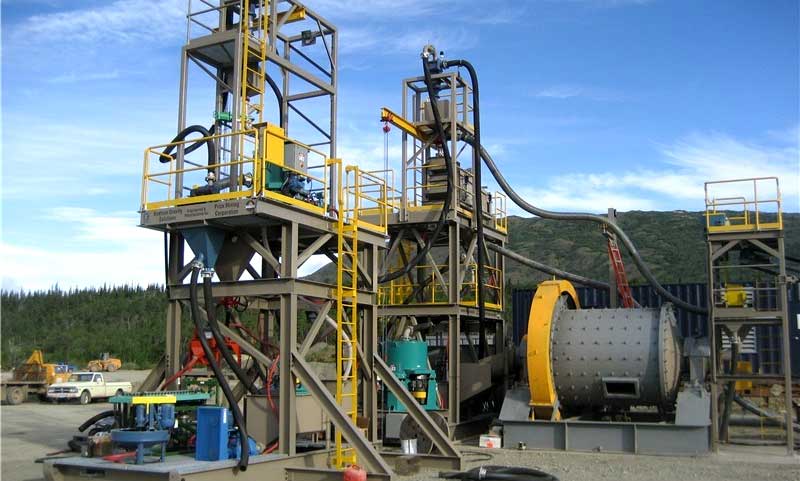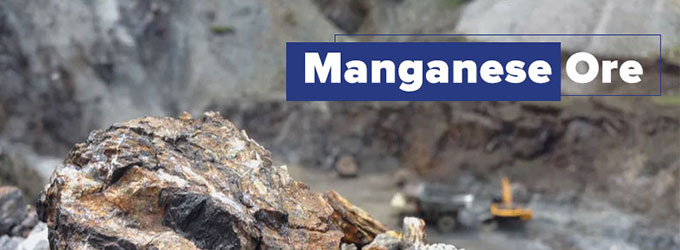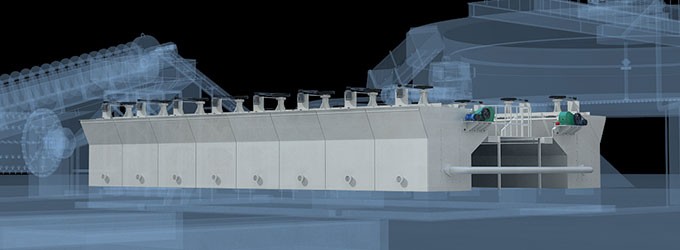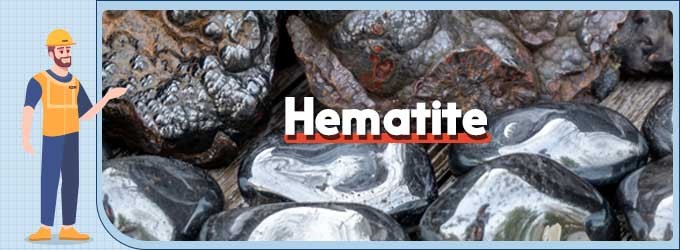Hematite, also spelled haematite, is a weakly magnetic iron ore with better floatability than magnetite and wide distribution. It is one of the most important raw materials for the extraction of iron.
Its composition is complex. In addition to containing a small amount of magnetite, the impurity embedding of haematite has uneven particle size and high content of fine particles, thus some beneficiation methods are needed in the extraction of iron from haematite.
Extraction of hematite
The process flow of the extraction of iron from hematite is as follows: crushing, grinding, extracting (flotation separation, magnetic separation, gravity separation, etc.) and drying.
- Stage I Crushing and screening hematite
- Stage II Grinding hematite
-
Stage III Extracting iron from hematite
*Hematite flotation separation
*Hematite magnetic separation
*Hematite magnetic roasting
*Hematite gravity separation - Stage IV Drying hematite
Stage I Crushing and screening hematite
Firstly, the raw hematite ores are evenly sent to a jaw crusher through a vibrating feeder for coarse crushing, then are sent to a cone crusher for fine crushing. Next, the ore is screened by a vibrating screen. Those whose particle size meet the requirements would be sent for grinding, while the others would return the cone crusher for further crushing.

Stage II Grinding hematite
The finely crushed hematite ores are sent to the ball mill for grinding and then classified by a spiral classifier into different particle sizes. The qualified ores would be sent to the next process, while the unqualified ores continue to be finely ground.

Stage III Extracting iron from hematite
According to the different particle sizes of ore embedded, hematite can be divided into coarse-grained hematite, medium-grained hematite and fine-grained hematite.
Coarse-grained hematite refers to iron ore with an embedded particle size of 2mm or more. It is easy to extract iron from this kind of haematite by using gravity separation and magnetic separation.
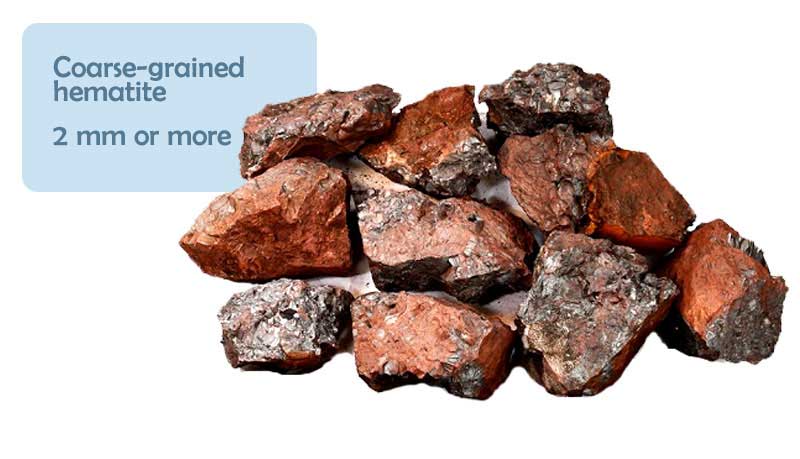
Medium-grained hematite refers to iron ore with an embedded particle size between 0.02 and 2mm. This type of hematite is also relatively easy to select, mainly using gravity separation, magnetic separation and magnetic roasting.
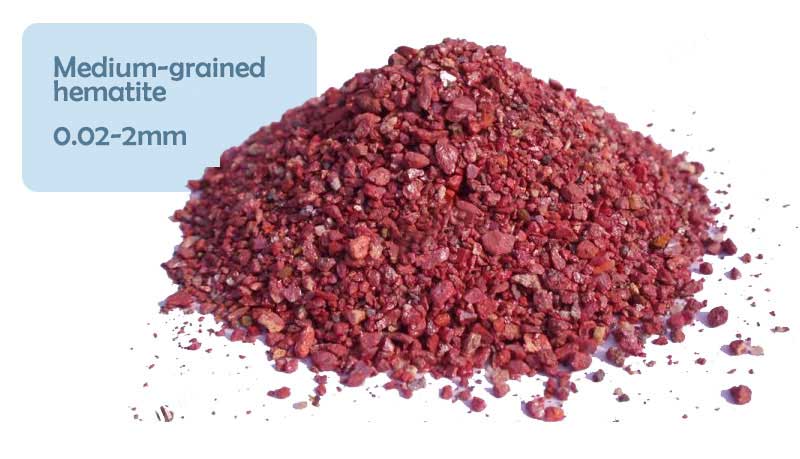
Fine-grained hematite refers to iron ore with an embedded particle size of less than 0.02mm. Based on the genesis of ore deposits, this kind of hematite is mostly sedimentary rock iron ore. The ore composition is complex and difficult to be selected. At present, combined processes are adopted, such as weak magnetic separation-strong magnetic separation, magnetic separation-flotation, magnetic roasting-flotation, and gravity-magnetic separation-flotation.
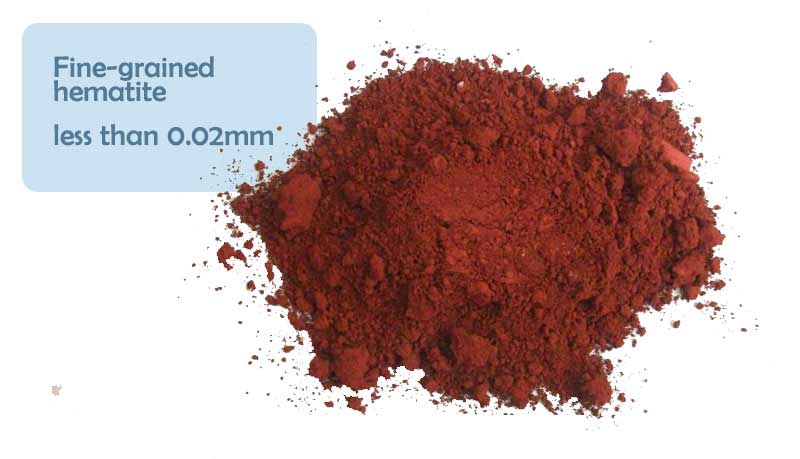
Hematite flotation separation
The flotation separation is mainly used for the extraction of iron from the fine-grained and particulate haematite. If it is difficult to recover fine ore particles smaller than 10μm by other methods, the flotation separation method can be adopted.
At present, froth flotation is commonly used. Its principle is to grind the hematite ore into a slurry by adding water to the flotation machine, and then stir and aerate to produce a large number of dispersed bubbles. Part of the floatable minerals adheres to the bubbles and float to the surface of the pulp to form foam (concentrate), while the non-floating gangue (tailings) stays in the pulp to achieve the extraction of iron from haematite.
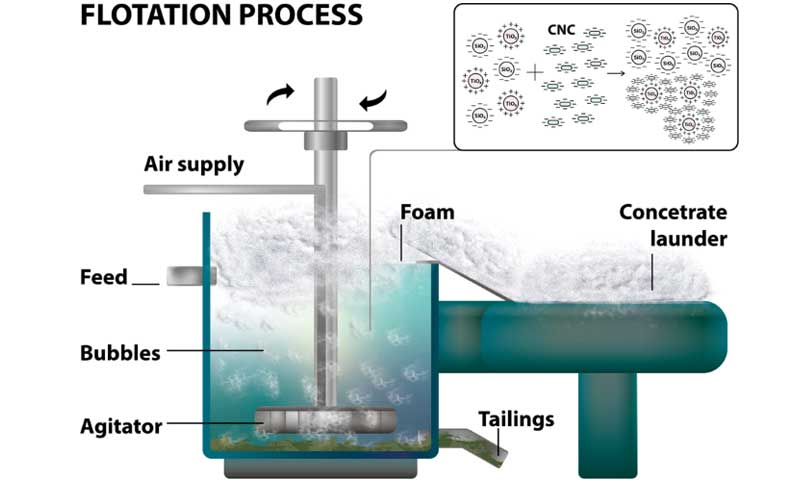
(1) Flotation reagent
Before the flotation process, please choose the correct flotation reagent, as the choice and operation of the reagent can affect the final flotation index.
Flotation reagent is a chemical agent used in the process of flotation. It can adjust the surface properties of hematite, improve or reduce the floatability of minerals, and make the properties of pulp and foam stability more conducive to mineral separation.
According to the function differences, the flotation reagents are usually divided into three categories: collectors, foaming agents and regulators.
- Collectors: Aim to collect the target minerals by changing the hydrophobicity of the mineral surface so that the floating mineral particles adhere to the air bubbles. According to the properties, collectors can be divided into non-polar collectors, anionic collectors and cationic collectors, including Alkyl dithiophosphoric acid or its salts, Xanthate salt, Fatty acids and Fatty amines;
- Foaming agents: Aim to collect to produce a foam layer that can float minerals, which can improve the degree of bubble mineralization and stability in the process of floating. The commonly used foaming agents include Terpenic oil, Cresotic acid and Alcohol;
- Regulators: Aim to change the properties of the surface of ore particles, adjust the interaction between minerals and collectors, and adjust the properties of pulp.
According to the uses, regulators can be divided into six categories.
① Activators: Aim to promote the effect of collector and minerals and improve the floatability of minerals. The commonly used activators include Cupric sulfate and Sodium sulfide;
② Inhibitors: Aim to weaken the effect of collectors and minerals and reduce the floatability of minerals. The commonly used inhibitors include Lime, Sodium sulfide, Sulfur dioxide, Sodium cyanide and Soluble gelatine;
③ pH value regulators: Aim to adjust the pH value of the pulp, control the properties of minerals, the chemical composition of pulp and the action conditions of the medicament to improve the flotation effect. The commonly used regulators include Lime, Sodium carbonate, Sodium hydroxide and Sulfuric acid;
④ Dispersants: Aim to promote the dispersion of fine mud in the slurry. The commonly used dispersants are Water glass and Na2CO3;
⑤ Flocculants: Aim to promote the agglomeration of fine mud in the slurry and speed up the sedimentation speed in the water. The commonly used flocculants are Starch and Polyacrylamide;
⑥ Defoamers: Aim to promote weaken the stability of mineralized foam and eliminate the harmful effects of excessive foam on the sorting effect and foam transportation. The commonly used defoamers are Sodium tripolyphosphate.
The type and quantity of reagents must be determined by ore flotation test and research, and then verified under industrial conditions. Increasing the amount of collector and foaming agent can increase the flotation speed and obtain better flotation indexes. However, excessive addition will reduce the recovery rate and the quality of the concentrate. Inhibitors and activators should also be in appropriate amount, as too much or insufficient addition will reduce the flotation index.
The dosing point can affect the effectiveness of the reagents. The insoluble collectors, pH value regulators and inhibitors are often added to the ball mill. The reagents that counteract each other are added separately. Generally, the second reagent will be added after the first reagent has taken full effect.
Dosing methods include one-time addition and batch addition. The method of one-time addition is simple and has a strong effect, so it is often used. For the method of batch addition, it is suitable for agents that are easy to be taken away by foam, easy to react in the slurry, and require strict control in dosage. To achieve better efficacy, reagents with different structures are often mixed in proportion.
(2) Hematite flotation process
According to the value of mineralized foam, hematite flotation process is divided into hematite positive flotation and hematite reverse flotation.
Hematite positive flotation is to scrape out the useful minerals with foam, and meanwhile discarding the useless gangue minerals(tailings). While, Hematite reverse flotation is to scrape out the useless minerals with foam, and the useful minerals are discharged.
In short, the foam of positive flotation is the useful minerals, while the foam of reverse flotation is the useless minerals.
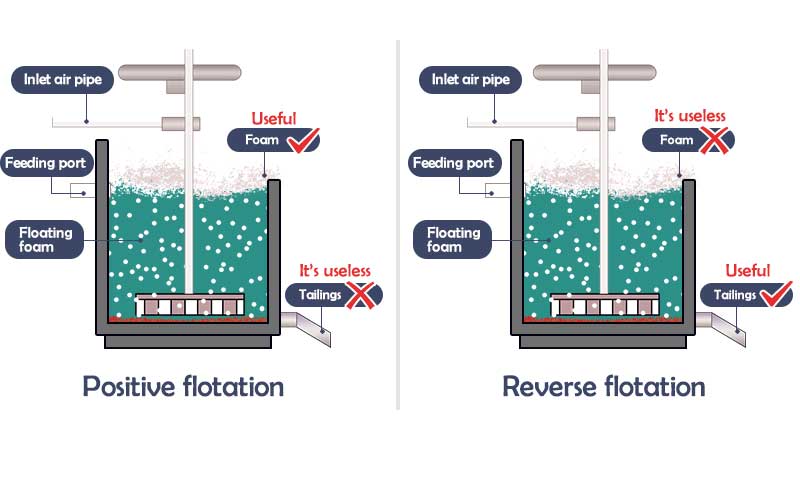
Hematite positive flotation differs from reverse flotation in both reagent selection and application range. From the nature of hematite ore, reverse flotation has more advantages than positive flotation.
| Flotation process | Reagents | Application | Advantages | Disadvantages |
| Positive flotation | Fatty acids or Hydrocarbyl sulfate and Petroleum sulfonate | For low-grade ore with simple mineral composition, good iron mineral floatability, and low mud content | Have simple prescription, low cost, and easy operation. | Tend to have sticky foam, difficult to concentrate and filter. |
| Reverse flotation | Cationic collectors | For high-grade ore with complex composition | Simplify the process, avoid desliming, and reduce the loss of iron minerals. | NA |
| Anionic collectors | For high-grade ore with floatable Quartz | Composition of iron ore and sludge content have little effect on the flotation index, easy to concentrate and filter. | Have complicated reagents, large consumption, and disposal of tailings (pH value up to 11). |
Hematite positive flotation: It uses the anionic collectors (Fatty acids or Hydrocarbyl sulfate and Petroleum sulfonates) to conduct the flotation process in the weakly alkaline or weakly acidic slurry. Sodium carbonate is used to disperse the sludge and precipitate multivalent harmful metal ions.
Hematite reverse flotation: It uses anionic or cationic collectors. The cationic collector uses the Sodium carbonate to adjust the slurry pH=8-9, uses Starch, Dextrin, etc. to inhibit iron minerals, and then uses an Amine collector (Ether amine, Fatty amine) to float the quartz gangue. While the anionic collector uses the Sodium hydroxide or Sodium hydroxide and Sodium carbonate to adjust the pH value of the pulp to above 11, use Starch and Dextrin to inhibit hematite, use Calcium chloride to activate the quartz, and then use the collector (Fatty acids) to capture the quartz gangue.
(3) Disposal of hematite tailings
Due to the large dosage of flotation process (especially reverse flotation) and the complicated reagents system, the tailings often contain a lot of toxic substances, wastewater, and heavy metal ions. If they are not properly handled, they will pollute the environment, destroy the ecology and increase the potential safety hazards.
To solve these problems, the beneficiation plants usually take the following measures: tailings dam storage, tailings re-selection, tailings dewatering, tailings filling in the mined-out area (It means to refill the disposed tailings waste back to the mined-out area), etc.
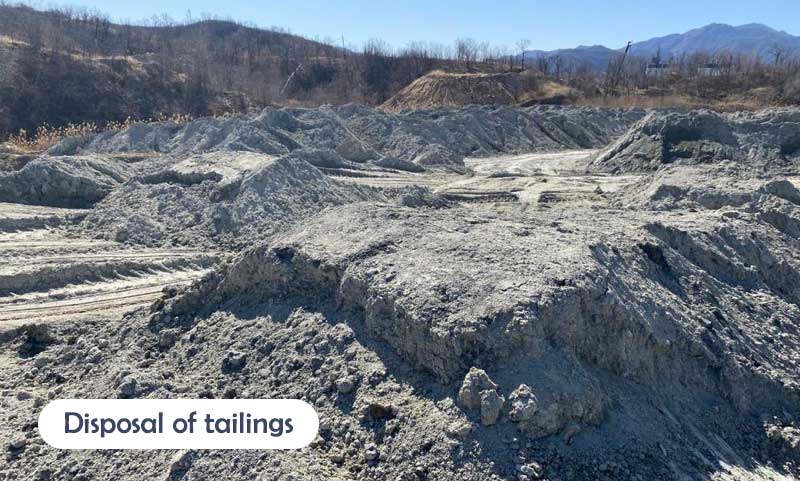
The flotation separation method is most widely used in the extraction of iron from haematite. It is economically efficient. Compared with other beneficiation methods, it performs better to separate the fine-grained poor hematite ores that are difficult to separate. However, due to the complicated reagents issues, it is necessary to consult the professionals and pay special attention to the disposal of hematite tailings.
Hematite magnetic separation
Hematite magnetic separation is used to separate coarse-grained (20-2mm) and medium-grained weakly magnetic haematite ore.
Its principle is to use the magnetic difference of various minerals to realize the separation. In the magnetic field, magnetic mineral particles are aggregated to form the "magnet clusters" or "magnetic chains", which move to the magnetic poles. While the non-magnetic minerals such as gangues attached to the cylinder fall off during the flip.
Hematite magnetic separation can be divided into two processes: weak magnetic-strong magnetic separation and strong magnetic-flotation.
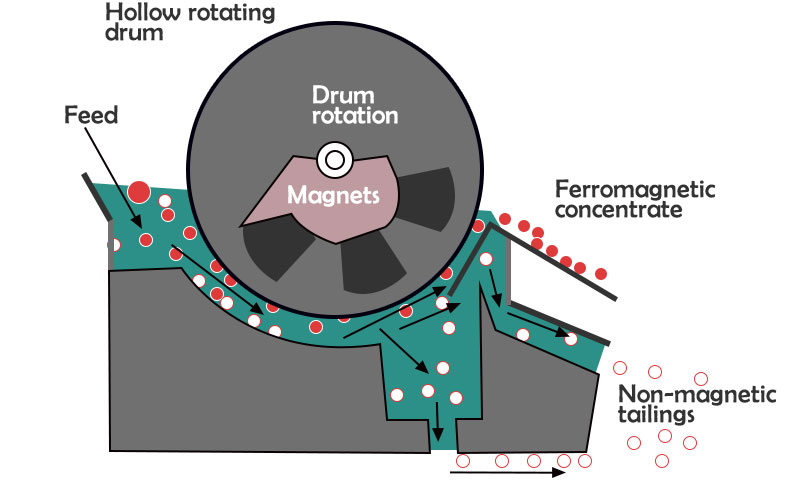
(1) Weak magnetic-strong magnetic separation
It is suitable for separating the low-grade magnet-hematite mixed ore.
The weak magnetic separation process is often added before the strong magnetic separation process to separate the strong magnetic minerals in the ore in case that the strong magnetic minerals may cause the blockage of the magnetic separator.
After the weak magnetic separation, the strong magnetic rough separation and sweep selection are carried out. Then the haematite ore is concentrated by the strong magnetic separator.
(2) Strong magnetic-flotation
This method is suitable for the extraction iron from fine-grained haematite.
First, the coarse concentrate is selected by the strong magnetic separation, while the gangue minerals, such as single quartz and muddy chlorite, are directly discharged, which plays a dual role of desliming and throwing tails. Then the qualified haematite ore is concentrated by the flotation process of ground coarse concentrate.
The magnetic separation is also one of the commonly used beneficiation methods of hematite. It has the advantages of low cost, high separation efficiency, simple separation process, and no pollution to the environment.
Hematite magnetic roasting
When the hematite ore contains rich and complicated minerals and is difficult to be sorted out, magnetic roasting can be the first choice. It is mainly used to separate the fine to particulate hematite ore.
Its principle is to magnetize the hematite ore under certain temperature and atmosphere conditions to reduce the hematite or false hematite into magnetite. Then based on the magnetic differences between magnetic minerals and gangue, hematite concentrate is obtained.
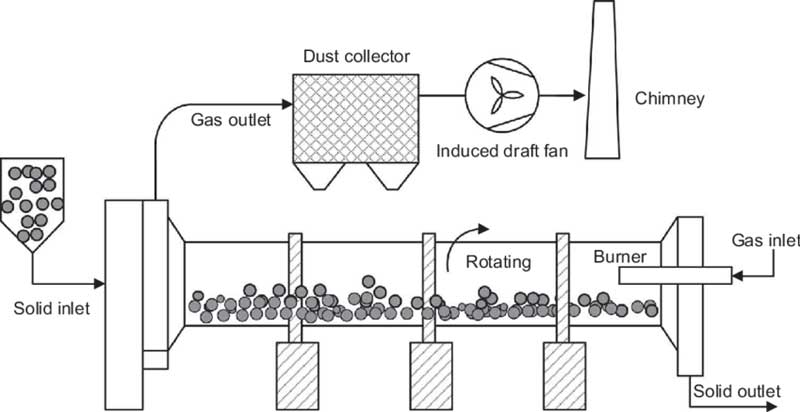
To obtain higher grade hematite concentrate, this method is often combined with the reverse flotation. Because of the huge investment in magnetic roasting equipment and high cost of beneficiation, it is not recommended for small-scale beneficiation plants.
Hematite gravity separation
Gravity separation is mainly used for the extraction of iron from coarse-grained and medium-grained weakly magnetic haematite.
Its principle is to use the difference in particle size (or specific gravity) between hematite and other gangue ore and be affected by mechanical forces (gravity and fluid dynamics) in the moving medium (water, air, etc.) to realize the extraction of hematite.
There are two types of heavy separation: gravity separation for coarse particles and gravity separation for fine particles.
(1) Gravity separation for coarse particles
This method is used for the extraction of iron from the coarse-grained haematite. The geological grade of hematite deposit is relatively high (about 50%), but the ore body is thinner and has more interlayers, and the ore will be depleted due to the mixing of waste rocks during mining.
For this type of hematite ore, we adopt "Only crushing but no grinding". Then, the coarse-grained tailings are discarded by the gravity separation to restore the geological grade.
(2) Gravity separation for fine particles
It is used for the extraction of iron from fine-grained haematite with high magnetic content. After crushing, the ore is ground to realize the monomer separation of minerals, and then the high-grade concentrate is obtained by the gravity separation.
Compared with other beneficiation methods, gravity separation can be applied to a wide range of materials and has the advantages of low production cost and less harm to the environment. However, due to its low unit processing capacity and low recovery rate, we often adopt a combined process of strong magnetic separation and gravity separation. That is, a large number of unqualified tailings are discarded by the strong magnetic separation. Then the gravity separation is used to separate the magnetic concentrate and improve the grade of hematite concentrate.
Stage IV Drying hematite
After the extracting, hematite needs to be concentrated to remove the water by a thickener first, then be dried by a dryer. Finally, the high-quality iron powders are obtained.

Hematite beneficiation plants
Hematite beneficiation plant in Africa
A beneficiation plant in Africa processed the argillaceous hematite with hard black crystals. This kind of hematite ore is coarse-grained and easy to be separated from gangue thereby adopting the method of stage grinding and gravity separation.
After crushing, screening, one-stage grinding, hematite was sent to the spiral chute for gravity separation processing. Finally, this beneficiation plant obtained the 49% mixed concentrate and a high recovery rate of more than 90%.
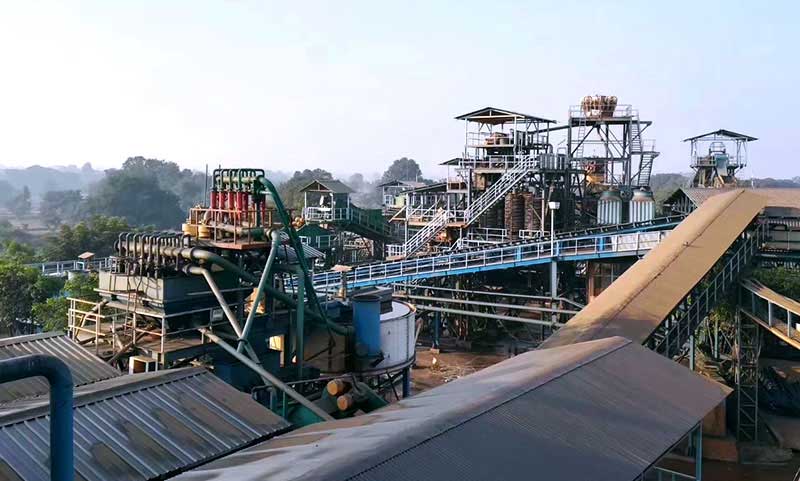
Hematite beneficiation plant in India
The hematite ore processed by a beneficiation plant in India has an uneven grain size and gangue minerals as quartz. It adopted a combined process of stage grinding and gravity separation-magnetic separation-reverse flotation.
After one stage of grinding, nearly 60% of the coarse-grained concentrate and tailings were obtained. Then through the gravity separation, the coarse-grained concentrate was separated and tailings were discarded. Finally, the strong magnetic-reverse flotation was adopted to obtain the fine-grained concentrate.
The final indicators of the process were as follows: the selected grade reached 23.15%; the concentrate grade reached 65.95%; the tailings grade reached 10.05%. The process had the dual characteristics of reasonable economic benefit and advanced technology, which greatly improved the plant's beneficiation technical indicators.
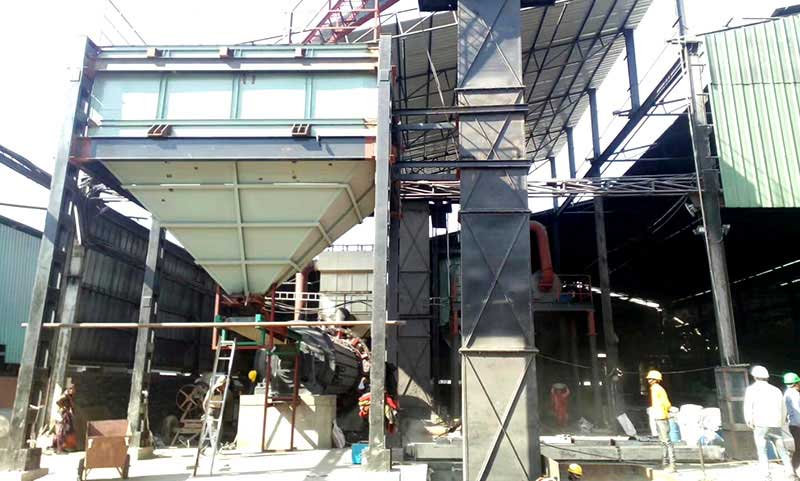
CHematite beneficiation plant in U.S.
In the Michigan of the United States, there existed a kind of very fine-grained hematite with uniform distribution and oolitic, kidney and other colloidal forms. It was very difficult to be separated. In comparison to the indexes of magnetic separation, gravity separation, and magnetic roasting-magnetic separation, the process of continuous grinding, magnetic roasting-weak magnetic separation was adopted.
After three grindings, the concentrate grade of original ore was less than 57%, and the recovery rate was less than 10%. After the magnetic roasting-weak magnetic separation process, the concentrate grade of hematite reached 62%, and the recovery rate reached 80%, which fundamentally solved the problem of both beneficiation and recovery.
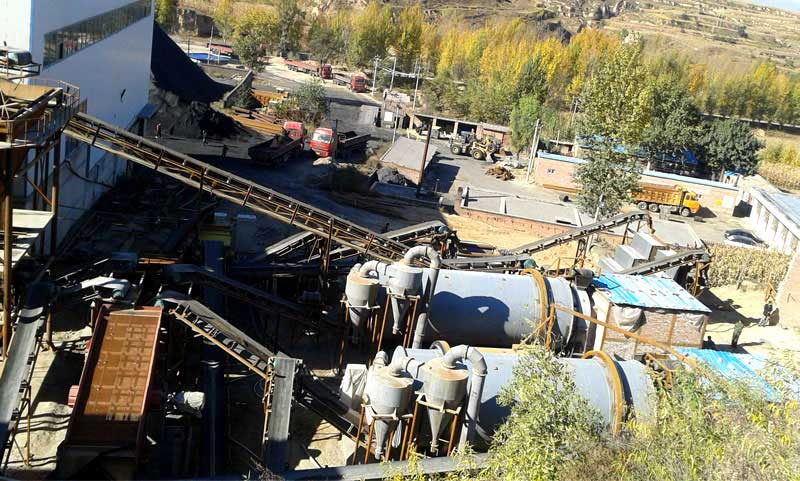
Hematite beneficiation plant in Singapore
In Singapore, a beneficiation plant was located in the area abound with large quantities of lean hematite ores. The mining volume of hematite was huge, but the waste issue was serious, and could not realize the improvement of the utilization rate of hematite resources. After the comprehensive analysis, the hematite beneficiation production line adopted the process of stage grinding, strong magnetic separation and reverse flotation.
First, after the grinding, the coarse hematite ore was sent to the magnetic separator for coarse separation and fine selection. During the magnetization process, a demagnetization process was added to remove the magnetism of minerals as well as improve the concentrate grade. Next, the hematite was sent to the flotation machine for reverse flotation. Finally, the concentrate that contained a large amount of water was sent to a thickener to shrink, and then dried by a dryer.
This process can not only effectively improve the production efficiency, but also reduce the waste of resources and save costs.
